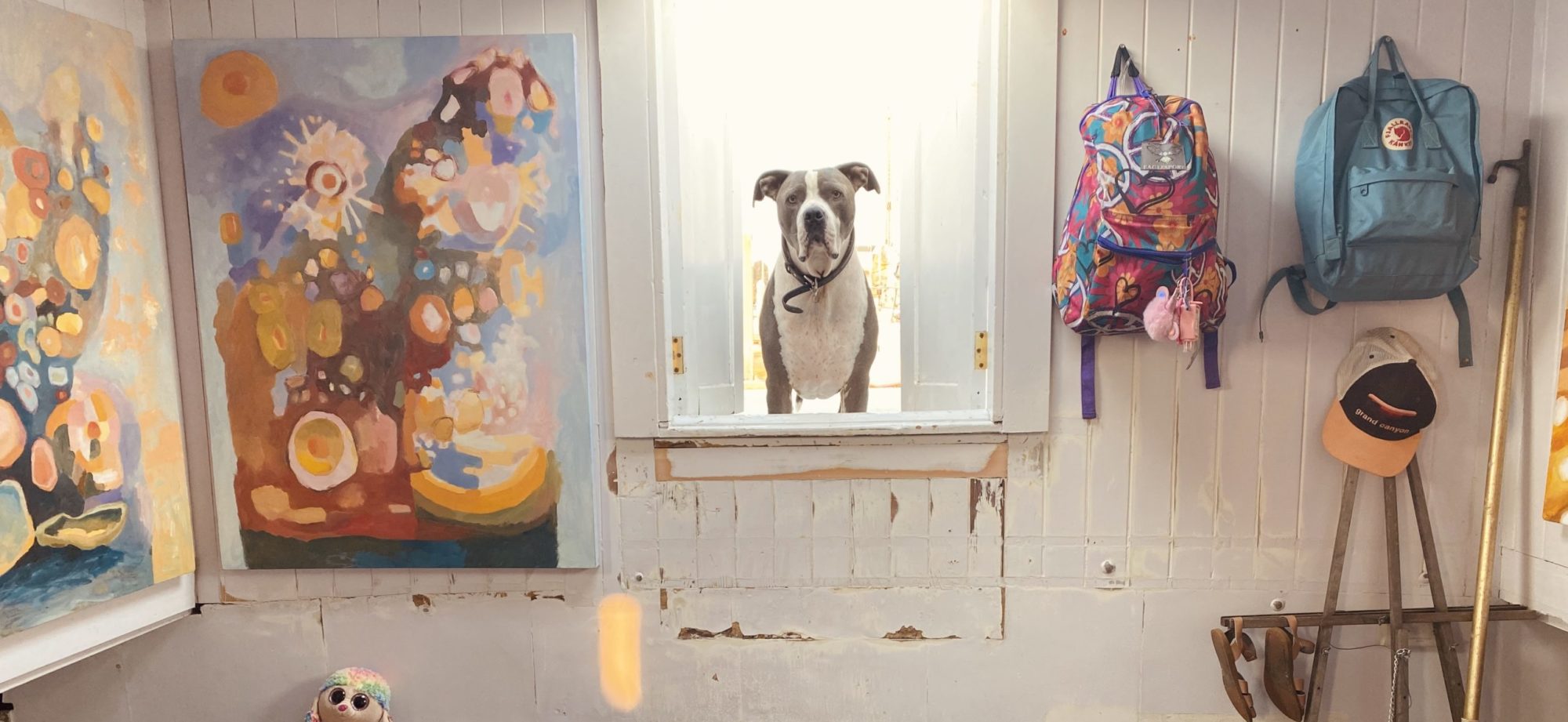It’s March now and in the valley this means it’s time to prepare our gardens for Spring planting. But on an established lot, with hungry fruit trees, gophers, a terraced topography out back, lots of little flower beds, habitat niches and no clear sun pattern throughout the yard, it’s hard to know where to focus in the preparations. It helps to make a plan of attack:
1. start compost area and begin layering kitchen scraps with leaves from the yard’s fallen leaves.
2. sketch a very basic layout of the lot, just for elements and their relationships.
3. from this sketch, decide where the different gardens will go: kid’s garden, herbs, moon garden, etc.
4. test soil to check for deficiencies.

And that’s where you see us here. This is a simple $5 soil testing kit from the local hardware store that I thought Ford might like to perform. Ideally, you want to get a soil test professioanlly done, or contact your county extension agent. But I chose the cheap, quick method. It comes with a color table that you compare the tube colors against, and there are 4 tubes to test with (Nitrogen, Phosphorus, pH and Potassium). Our pH tube here (soil mixed with water and the given reagents) eventually turned green, indicating that the soil is alkaline. And what do you do with alkaline soil? You feed it acids. Compost. The grapefuit tree looks chlorotic and appears dormant after fruiting, very likely due to the alkaline soil.
I hauled leaves from the oak tree understory and started double digging to incorporate some nitrigen into the soil. We’ll see how this goes. And so my outline continues:
5. amend soil.
6. sow seeds directly,
7. plant seedlings.
Here I go on my Reading Rainbow soapbox:
Do you have a garden plan? You you want to have a garden plan but lack inspiration? Here’s a great book to share with your kids, one that we love: Roots, Shoots, Buckets and Boots. It’s a book just bursting with kid-friendly gardening ideas and sweet watercolor illustrations. My favorite tip from the book is to take naturtium seeds and plant them in a dirt-filled old gardening glove and then tack that to the wall. Because nasturtiums thrive under desperate conditions and because I see all sorts of other possiblilities from this idea. Why not use old hats? colorful stockings or socks? Squares of lace, tied into bags and hung in random spots here and there…
Another book I have that I reference often is a book I checked out from the tiniest local library we have ever belonged to (when we were Airstreaming it on an abandoned farm in Texas) and that I eventually bought for a penny plus shipping online. It’s The Organic Gardener by Catharine Osgood Foster. It’s an older book, slightly verbose but brimming with wonderful and proven strategies for gardening with nature. For example, I’m interested in companion planting, which is a permaculture technique that involves planting different crops in close proximity so that a sort of harmonious balance is created, a model for natural biodiversity, with each plant serving another in one beneficial way or another. It also looks cool and cottage-gardeny, full of texture and visually unexpected. This book pays attention to companion planting as a way to reduce pests. It’s very oldschool, written in the 70s I think, and full of old-fashioned wisdom.
So, tomorrow we continue the double-digging.
Do you have any garden plans of your own? I need to go poke around the blogs. Happy Digging!








